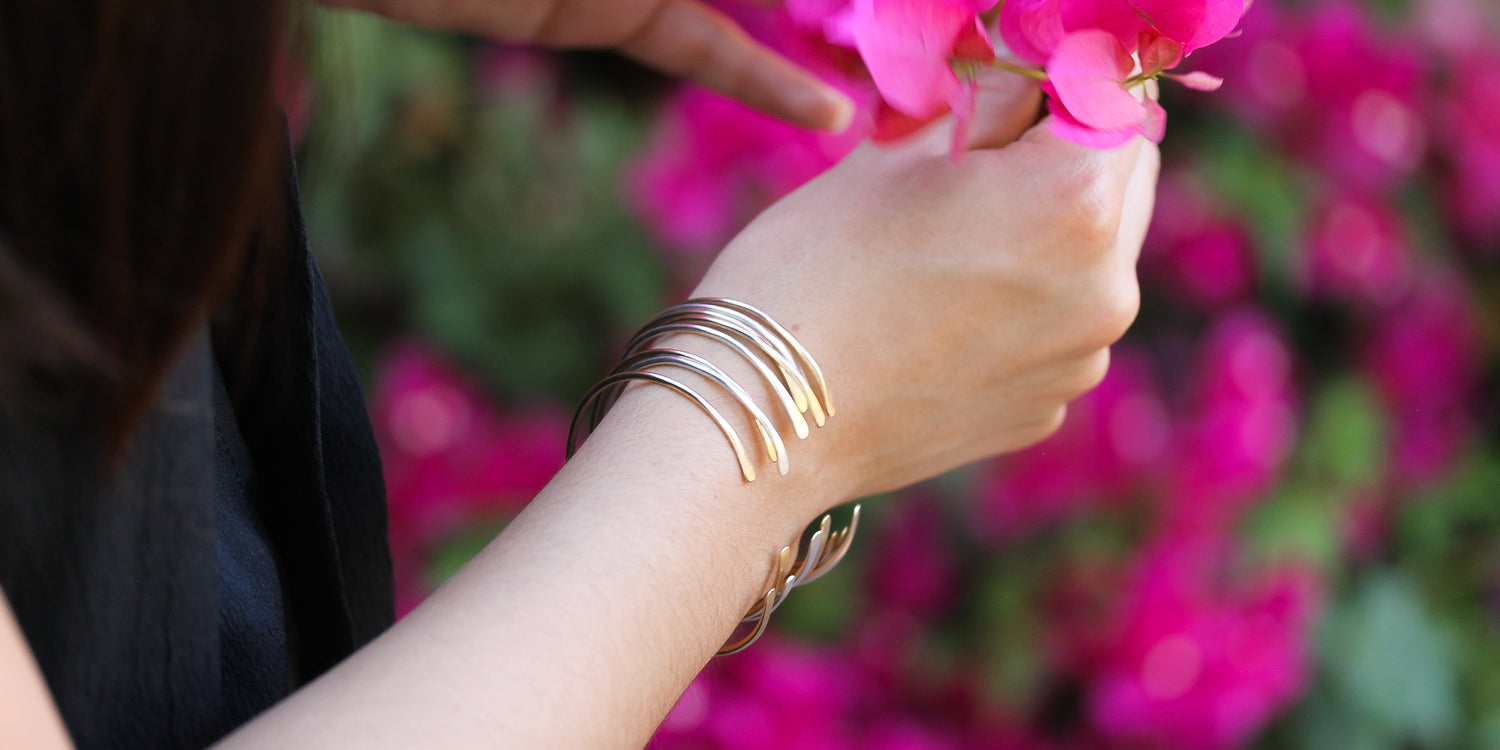You're a thoughtful person. Intentional. You want to shop responsibly, but it can be difficult to do. Are you being green washed by a corporation that is just trying to look green, or have you found the real deal? Let's talk about HOW to shop for eco-friendly jewelry and then let's walk through some of the elements of eco-friendly jewelry so you know what to look for.
How to shop
Shopping for eco-friendly jewelry isn't difficult, but it can feel overwhelming, especially if you're used to buying a cute little bauble during your weekly retail-therapy sesh (haven't we all?). I know I've hit the eco-friendly sweet spot when a piece of jewelry is:
-Sustainably made, with as little impact on the environment as possible. (More to follow).
-Versatile and long-lasting - I'll get a lot of use out of it and it feels like a signature piece. For jewelry, I want something that works with jeans and a tee as well as a cocktail dress. I don't necessarily seek out trendy pieces, since they tend to fall out of style.
-Well made and won't fall apart in 6 minutes/months (whatever comes first). Higher quality materials and craftsmanship are key.
-Within my budget. Don't be fooled here, I didn't say that it was cheapest... This one can be tricky! I find that I do this best when I keep a shopping list (or a bookmarks folder) with future purchases that I want to make as budget comes up. Some admittedly come up sooner than others, depending on the price tag. Even still, I find I'm happier to pay more for something of higher quality that will last longer. It also makes it really easy to have a suggestion ready when your family asks what you'd like before the holidays.
Ecofriendly shopping for me, means that I have a piece I love, is versatile, well-made, within my budget, and has that eco-friendly cred.
In what ways can jewelry be eco-friendly?
-Jewelry can be made with sustainable processes. This means that we reduce chemical usage and replace more harmful substances. Handmaking in smaller batches is a great way to manage this, and we also supplement by investing in carbon offsets* for our operations. We are very careful about our metal and all of our leftovers get saved up and melted down into pure gold and silver, which is then milled into sheet, wire, and casting grain for us to use (aka metal recycling). *Carbon offsets are investments that fund efforts to reduce carbon in the atmosphere. They vary but include large and small scale clean energy production (like wind farms and cookstoves), planting trees, or clean up projects that remove waste and pollutants.
-Jewelry can be made with sustainable materials. This can mean materials that are actually upcycled and reused - we do some of this when we reimagine heirloom pieces into new designs - or it can mean that materials were sustainably/ethically mined or recycled. Our metals are recycled, which means that they have been through a refining process where the pure gold or silver is purified and then remade into ready-to-use forms.
-Jewelry can be sustainable because it is made well and made to last a lifetime. Plated jewelry tends to be short lived, since it is frequently a terrible skin irritant once the plating wears off. Not to mention how awful it is when it's in that in-between molting stage where it irritates your skin, but still looks sort of OK enough to just keep wearing it for another week or month before taking it in for plating (assuming this is even possible) or just throwing it away (more likely). I'm really, REALLY not a fan of plated jewelry, but I am smitten with gold filled jewelry. Gold filled jewelry is a bit like plating, since there's a core of brass** that is covered with 14K. The difference is that the layer of 14K with gold filled is VASTLY thicker and will not flake or wear thin or ruin your otherwise lovely complexion. **Brass is actually an important upgrade from the pot metal that a lot of plated jewelry is made of. Pot metal is literally a pot of metal, where metal gets thrown in, who knows what it is (ahem-nickel-ahem), and that's what gets used to cast jewelry that sits right against your skin. I like you and I want better for you. Please don't buy plated jewelry. Gold filled is stamped with GF or 14K/20 or 14/20 most of the time.
-Jewelry can be packaged wisely with eco-friendly materials. I'm talking about materials that keep your jewelry safe, that extend its life, and that are recyclable and made from recycled materials (why, yes, we do include a recyclable anti-tarnish bag in your cardboard jewelry box that is made from previously recycled materials. And, yes, your mailers are made from recycled materials, reuseable, and recyclable).
Does jewelry that you buy have to tick every box above? Of course not. I wanted to give you a glimpse into the behind the scenes processes that make your next bauble eco-friendly. We can ditch the constant cycle of buying pieces that turn colors and fall apart after a short time, so I hope that this information will help you to identify eco-friendly jewelry that will keep you looking glamorous (rather than gangrenous) for years to come.
xoxo,
Kristen
PS. Immediately after finishing this up, I checked my email to find a recall notice for nose rings and body bars that had to be recalled for their nickel content and a high incidence of skin irritation... Just in case it sounded like I was being overly dramatic about the current state of mass-produced jewelry.



